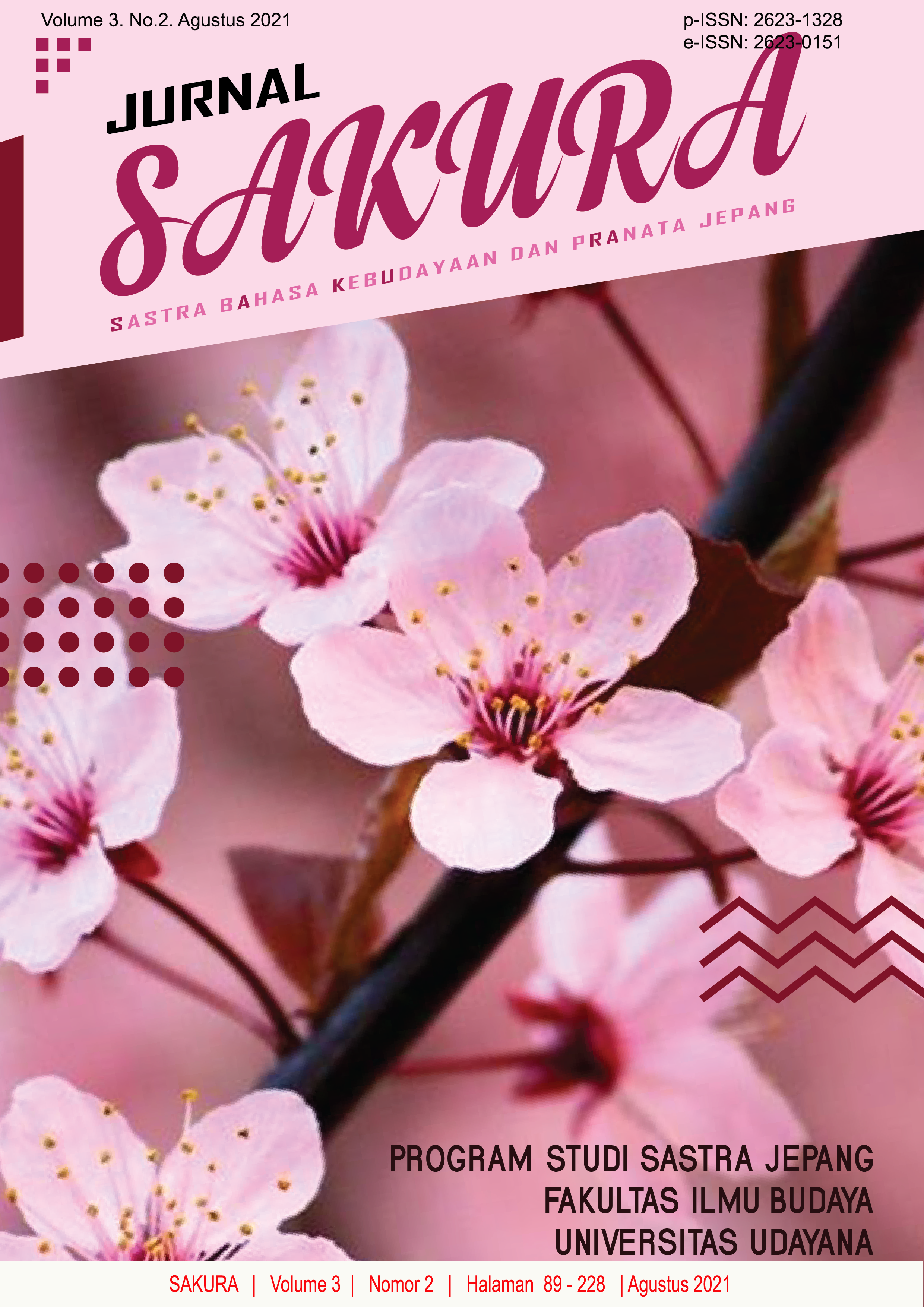Penggunaan Dandan, Dondon, Gungun, dan Masumasu pada Artikel Asahi Shinbun (edisi Juni 2020)
Abstract
This research is entitled "The use of Dandan, Dondon, Gungun, and masumasu in the Asahi Shinbun article (June 2020 edition)". Dandan, dondon, gungun, and masumasu have something in common, which means "more and more", but there are differences between the four adverb that can be seen in the sentences listed in the Asahi Shinbun article. This study aims to determine the structure, function, and contextual meaning of adverb dandan, dondon, gungun, and masumasu found in the June 2020 edition of the Asahi Shinbun article. The data in this study were obtained using the observation method and were collected using note-taking techniques. The collected data were analyzed using Verhaar's (2010) syntactic theory which is supported by the concepts of fukushi dandan, dondon, gungun, and masumasu by Akira (1998) and Pateda's theory of contextual meaning (2010). The method used to analyze the data is the descriptive method, namely by describing the results of the analysis. Based on the results of the analysis, the structure that forms a sentence contains dandan, dondon, gungun, and masumasu, namely followed by verbs, nouns, adjectives, and some are followed by verbs. Dandan shows that it serves to explain verbs, nouns, and verbs. Dondon serves to explain verbs and nouns. Gungun functions only to explain verbs. Masumasu functions to explain verbs and adjectives. Four types of contextual meanings affect dandan sentences, namely the context of the time, the context of the mood of the speaker/listener, the context of the situation, and the context of the goal. Three types of contextual meanings influence the dondon sentence, namely the object context, the objective, and the situation context. Two types of contextual meanings affect the sentence, namely the mood context of the speaker/listener, and the context of the goal and then the contextual meaning affects the masumasu sentence are four types, namely the context of the time, the context of the object, the context of the situation, and the context of the mood of the speaker/listener.
Downloads
References
Arino, Sagawa. 1998. Nihongo Bunkei Ziten. Tokyo: Kuroshio Shuppan.
Makino, Seiichi dan Michio Tsutsui, 2008. A Dictionary of Advanced Japanese Grammar. Tokyo: The Japan Times.
Sudaryanto. 1993. Metode dan Aneka Teknik Analisis Bahasa (Pengantar Penelitian Wahana Kebudayaan Secara Linguistik). Yogyakarta: Duta Wahana University Press.
Suleski, Ronald dan Masada Hiroko. 2012. Affective Expressions in Japanese. Tangerang Selatan: Alkitabah.
Verhaar, J.W.M. 2010. Asas-Asas Linguistik Umum. Yogyakarta : Gadjah Mada University Press.













